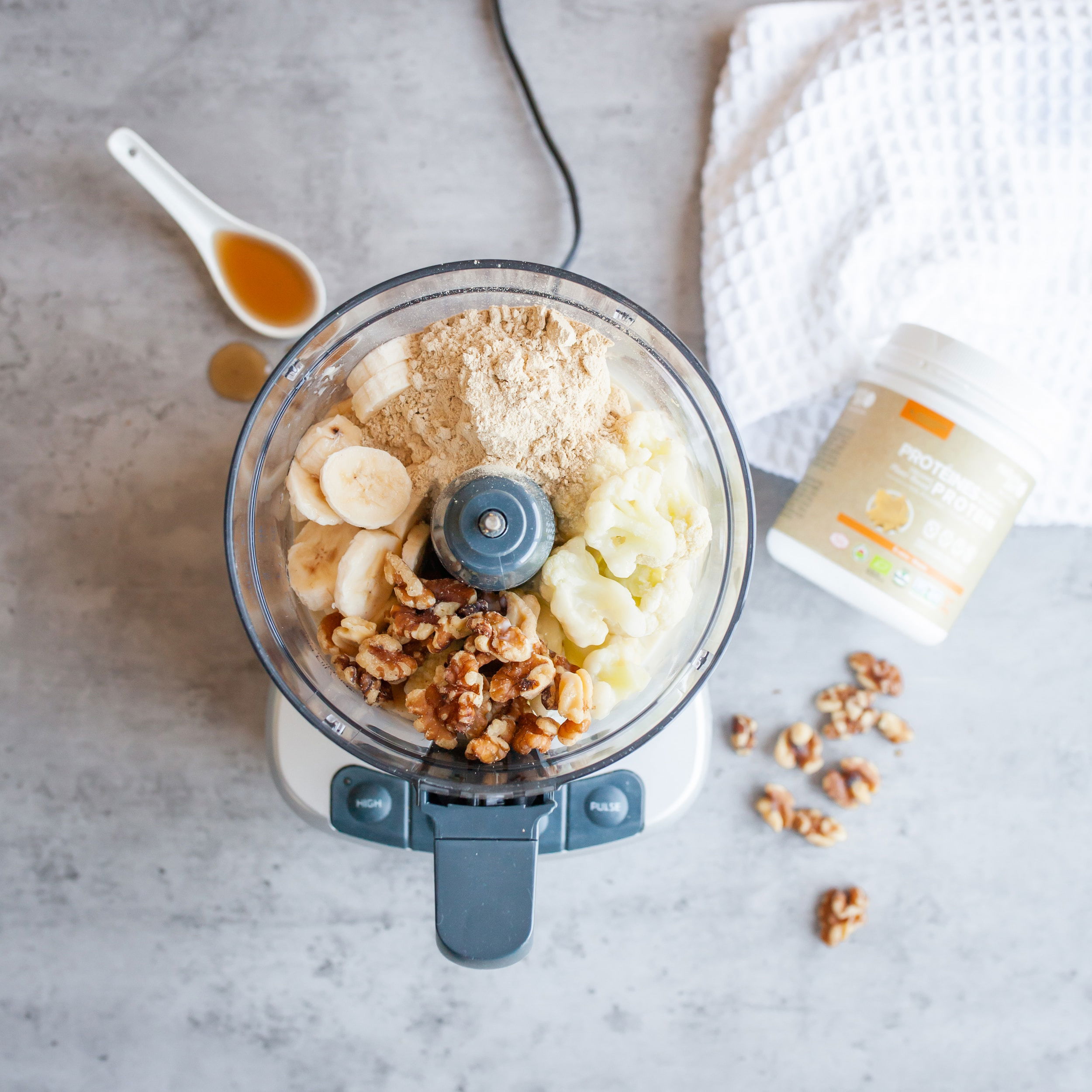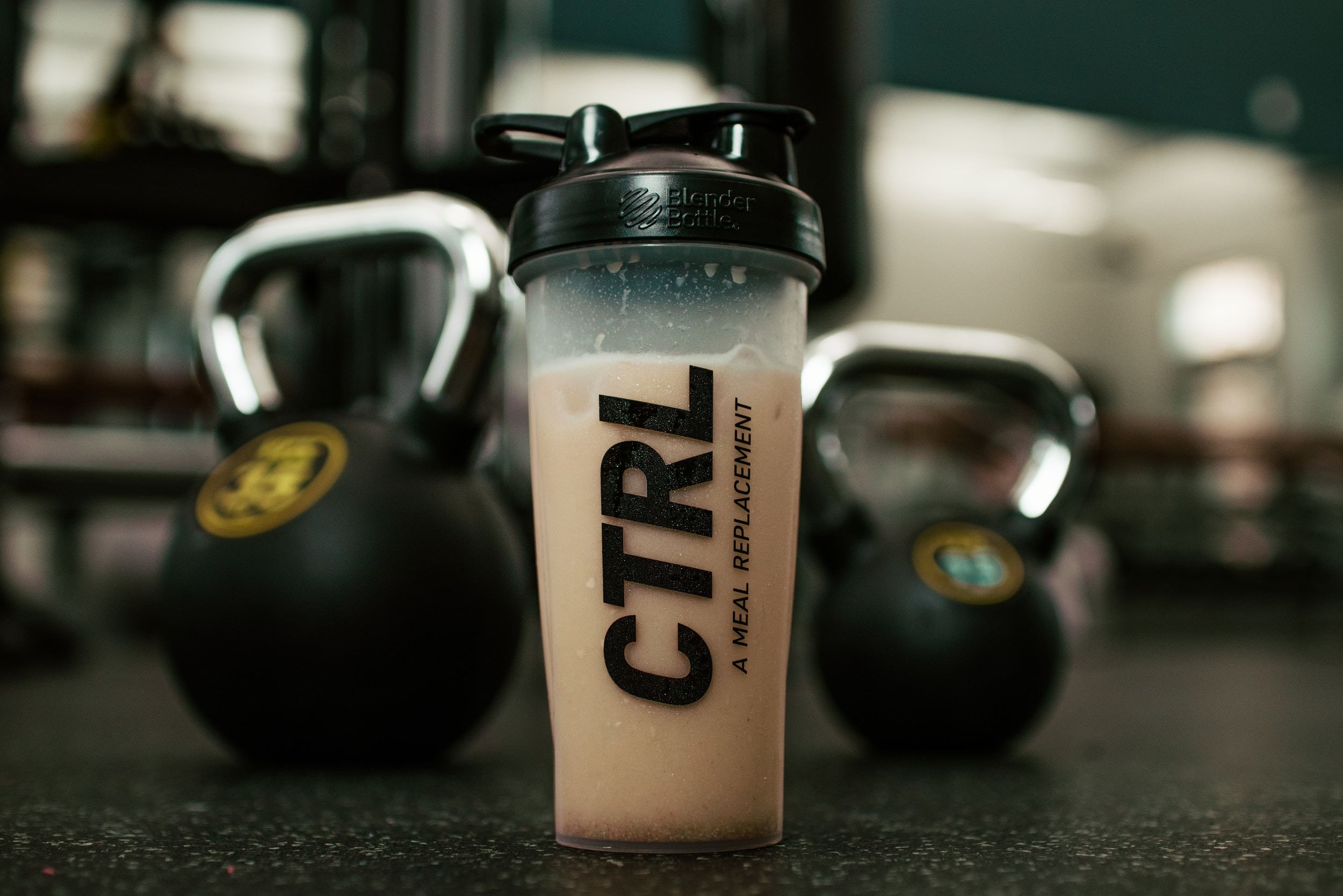High Protein Foods
What is protein?
Protein is a vital nutrient responsible for promoting cell growth, facilitating cell repair, and ensuring proper bodily functions. Ensuring an adequate protein intake in your daily diet is crucial.
The amount of protein required varies depending on factors such as weight, gender, age, and overall health. Meeting your protein needs can be easily accomplished by incorporating a diverse array of foods into your meals. Both plant and animal sources provide valuable protein, including:
• Meat and fish
• Eggs
• Dairy products
• Seeds and nuts
• Legumes such as beans and lentils.
amino acids & protein
Proteins are composed of amino acids, acting as fundamental building blocks. These amino acids, numbering around 20, intricately combine in various arrangements.
Once incorporated into your body, they serve as the raw materials for creating new proteins, including those essential for muscle and bone development, as well as compounds like enzymes and hormones. Moreover, amino acids can also be utilized as a source of energy.
Out of the 20 amino acids, 11 can be naturally synthesized by your body and are termed non-essential amino acids. Conversely, there are 9 amino acids, referred to as essential amino acids, that your body cannot produce on its own.
Ensuring sufficient intake of these essential amino acids in your diet is crucial to enable your body to function optimally.
What is the nutritional value of protein?
The nutritional value of a protein is determined by the presence and quantity of essential amino acids it contains. Various foods offer different amounts of essential amino acids, leading to the classification of proteins into different categories: Animal products, such as chicken, beef, fish, and dairy, are considered "complete" proteins, as they contain all the essential amino acids. They are often referred to as ideal or high-quality protein sources.
Soy products, quinoa, and the seed of a leafy green called amaranth (commonly consumed in Asia and the Mediterranean) also belong to the category of "complete" proteins, as they contain all the essential amino acids. Plant proteins, found in foods like beans, lentils, nuts, and whole grains, typically lack at least one of the essential amino acids and are considered "incomplete" proteins.
For individuals adhering to a strict vegetarian or vegan diet, it is essential to combine various protein sources from a range of plant-based foods every day to ensure a well-rounded mix of essential amino acids. Fortunately, with a diverse diet, vegetarians and vegans can usually obtain the necessary protein. For instance, a meal comprising cereals and legumes, like baked beans on toast, can provide all the essential amino acids found in a typical meat-based dish. By choosing a variety of foods, individuals on vegetarian or vegan diets can meet their protein requirements effectively.

Protein-rich Foods
A variety of food sources provide dietary protein, ensuring a well-rounded nutrient intake. Some excellent sources of protein include:
Lean Meats: Beef, lamb, veal, pork, and even kangaroo offer high-quality protein.
Poultry: Chicken, turkey, duck, emu, goose, and various bush birds are rich in protein content.
Fish and Seafood: Fish (such as salmon, tuna, or cod), prawns, crab, lobster, mussels, oysters, scallops, and clams are excellent sources of protein.
Eggs: Eggs are a versatile and protein-rich food option.
Dairy Products: Milk, yoghurt (with a special mention for Greek yoghurt), and cheese (especially cottage cheese) provide substantial protein content.
Nuts and Seeds: Almonds, pine nuts, walnuts, macadamias, hazelnuts, cashews, pumpkin seeds, sesame seeds, and sunflower seeds are nutrient-dense sources of protein.
Legumes and Beans: All types of beans (such as black beans, kidney beans, and navy beans), lentils, chickpeas, split peas, and tofu are excellent plant-based protein options.
Additionally, some grain and cereal-based products contain protein, although they are generally not as protein-dense as meat and meat-alternative products.
By incorporating a mix of these protein-rich foods into your diet, you can maintain a healthy and balanced nutrient intake.
Meeting your protein needs
Meeting your protein needs following the Australian Dietary Guidelines is both simple and effective. The Guidelines categorize foods into five distinct food groups, each contributing essential nutrients.
The two primary food groups that are significant sources of protein are:
'Lean meat and poultry, fish, eggs, tofu, nuts and seeds, and legumes/beans' group.
'Milk, yoghurt, cheese, and/or alternatives (mostly reduced fat)' group.
To maintain a balanced diet, the Guidelines recommend consuming specific daily servings from each of these five food groups.
It's important to note that the human body cannot store excess protein, so the most efficient approach to meet your daily protein requirement is to consume small amounts of protein at every meal. For adults, the recommended daily serves from the 'lean meat and poultry, fish, eggs, tofu, nuts and seeds, and legumes/beans' group, as well as the 'milk, yoghurt, cheese, and/or alternatives (mostly reduced fat)' group, can be found in the Australian Dietary Guidelines.
By following these guidelines and incorporating protein-rich foods into your meals throughout the day, you can easily satisfy your daily protein needs and maintain a healthy and well-nourished lifestyle.

Here is the data from the table presented in a clear and organized manner:
Recommended Average Daily Number of Serves:
Men aged 19–50 years: Lean meat and poultry, fish, eggs, nuts and seeds, and legumes/beans: 3 serves Milk, yoghurt, cheese and/or alternatives (mostly reduced fat): 2 1/2 serves.
Men aged 51–70 years: Lean meat and poultry, fish, eggs, nuts and seeds, and legumes/beans: 2 1/2 serves Milk, yoghurt, cheese and/or alternatives (mostly reduced fat): 2 1/2 serves.
Men aged 70+ years: Lean meat and poultry, fish, eggs, nuts and seeds, and legumes/beans: 2 1/2 serves Milk, yoghurt, cheese and/or alternatives (mostly reduced fat): 3 1/2 serves.
Women aged 19–50 years: Lean meat and poultry, fish, eggs, nuts and seeds, and legumes/beans: 2 1/2 serves Milk, yoghurt, cheese and/or alternatives (mostly reduced fat): 2 1/2 serves.
Women aged 51–70 years: Lean meat and poultry, fish, eggs, nuts and seeds, and legumes/beans: 2 serves Milk, yoghurt, cheese and/or alternatives (mostly reduced fat): 4 serves.
Women aged 70+ years: Lean meat and poultry, fish, eggs, nuts and seeds, and legumes/beans: 2 serves Milk, yoghurt, cheese and/or alternatives (mostly reduced fat): 4 serves.
Pregnant women: Lean meat and poultry, fish, eggs, nuts and seeds, and legumes/beans: 3 1/2 serves Milk, yoghurt, cheese and/or alternatives (mostly reduced fat): 2 1/2 serves.
Lactating women: Lean meat and poultry, fish, eggs, nuts and seeds, and legumes/beans: 2 1/2 serves Milk, yoghurt, cheese and/or alternatives (mostly reduced fat): 2 1/2 serves.
By following these recommended daily serves from each food group, individuals can easily meet their protein needs as outlined by the Australian Dietary Guidelines.
Standard Serve
A "serve" refers to a standard serving size of a particular food item within the 'lean meat and poultry, fish, eggs, nuts and seeds, and legumes/beans' group or the 'milk, yoghurt, cheese, and/or alternatives (mostly reduced fat)' group. These serve sizes help individuals determine the amount of protein they are consuming and assist in meeting their daily protein requirements.
Here are the standard serving sizes for the 'lean meat and poultry, fish, eggs, nuts and seeds, and legumes/beans' group:
- 65 g of cooked lean meats, such as beef, lamb, veal, pork, goat, or kangaroo (approximately 90 to 100 g raw).
- 80 g of cooked lean poultry, like chicken or turkey (approximately 100 g raw).
- 100 g of cooked fish fillet (approximately 115 g raw weight) or one small can of fish.
- 2 large eggs.
- 1 cup (150 g) of cooked dried beans, lentils, chickpeas, split peas, or canned beans (preferably with no added salt).
- 170 g of tofu.
- 30 g of nuts, seeds, peanut or almond butter, tahini, or other nut or seed paste (with no added salt).
And here are the standard serving sizes for the 'milk, yoghurt, cheese, and/or alternatives (mostly reduced fat)' group:
- 250 ml (1 cup) of fresh, UHT long life, reconstituted powdered milk, or buttermilk.
- 120 ml (1/2 cup) of evaporated milk.
- 200 g (3/4 cup or 1 small carton) of yoghurt.
- 40 g (2 slices) of hard cheese, such as cheddar.
- 120 g (1/2 cup) of ricotta cheese.
It's important to note that protein requirements for children and teenagers vary as they grow. For specific information about recommended serves for children, adolescents, and toddlers across all five food groups, further details can be found in the Australian Dietary Guidelines. By understanding and adhering to these serve sizes, individuals can ensure they meet their protein needs while maintaining a healthy and balanced diet throughout different stages of life.
increase your protein intake.
If you're aiming to increase your protein intake naturally, here are some suggestions to consider:
Peanut Butter Sandwich: Opt for natural peanut butter or any other nut paste without added salt, sugar, or fillers to make a protein-rich sandwich.
Low-Fat Cottage or Ricotta Cheese: Incorporate these high-protein cheeses into dishes like scrambled eggs, casseroles, mashed potatoes, or pasta dishes. You can also spread them on toast for a nutritious morning meal.
Nuts and Seeds: Enhance the protein content of salads, vegetables, and curries by adding nuts and seeds. Toasted pine nuts or flaked almonds can add a delightful crunch to green salads.
Beans: Boost the protein content of soups, casseroles, and pasta sauces with beans. Add drained cannellini beans to your favorite vegetable soup recipe or casserole for an extra protein punch.
Hummus: Enjoy a plate of hummus with freshly cut vegetable sticks as a nutritious and protein-rich snack. Alternatively, use hummus as a spread for your sandwiches during lunchtime.
Greek Yoghurt: This protein-packed food can be used throughout the day. Add it to your favorite breakfast cereal, spoon some on top of a bowl of pumpkin soup, or serve it as a dessert with fresh fruit.
Eggs: Eggs are a versatile and easy option for boosting protein in your diet. Enjoy them on their own or incorporate them into various dishes for added protein.
By incorporating these protein-rich foods into your daily meals and snacks, you can naturally increase your protein intake and maintain a well-balanced and nutritious diet.
Protein deficiency
Protein deficiency occurs when an individual does not consume enough protein in their diet to meet their body's needs. In Australia, protein deficiency is rare because the typical Australian diet tends to contain more protein than is necessary. However, certain groups of people with specific dietary requirements, such as older individuals and those strictly following vegetarian or vegan diets, may be at a higher risk of protein deficiency.
Common symptoms of protein deficiency include:
Wasting and Muscle Tissue Shrinkage: Insufficient protein intake can lead to the breakdown of muscle tissue, resulting in muscle wasting and shrinkage.
Oedema: Protein is essential for maintaining proper fluid balance in the body. A deficiency in protein can lead to oedema, characterized by the accumulation of fluids, particularly in the feet and ankles.
Anaemia: Protein is necessary for the synthesis of various components of the blood, including hemoglobin. Inadequate protein intake may contribute to anaemia, where the blood is unable to deliver sufficient oxygen to the body's cells due to dietary deficiencies, such as lack of iron.
Slow Growth in Children: Children who do not receive adequate protein in their diets may experience slow growth and development.
It is crucial for individuals with special dietary requirements, such as vegetarians, vegans, and older adults, to be mindful of their protein intake and ensure they include a variety of protein-rich foods in their meals. If someone suspects a protein deficiency, it is essential to seek medical advice and make appropriate dietary adjustments to address the deficiency and ensure optimal health.
muscle mass and strength
As individuals age, typically from around 50 years old and onwards, there is a gradual loss of skeletal muscle known as sarcopenia, which is common in older people. Sarcopenia can be exacerbated by factors like chronic illness, a poor diet lacking in nutrients, and a sedentary lifestyle.
Maintaining the daily recommended protein intake becomes crucial in preserving muscle mass and strength, especially in older adults. This is vital for sustaining mobility, such as walking, and reducing the risk of injuries from falls.

For older individuals to effectively maintain muscle mass, it is essential to focus on consuming high-quality protein foods, such as lean meats. These protein sources offer a wealth of essential amino acids that are particularly beneficial for supporting muscle health and function. By making wise dietary choices and including adequate protein in their meals, older adults can better safeguard their muscle mass and overall well-being as they age.
Additionally, staying physically active through appropriate exercises can complement the positive effects of a protein-rich diet in mitigating the impact of sarcopenia.
Protein supplements
Protein shakes, powders, and supplements are generally unnecessary for the majority of Australians, as the most recent national nutrition survey indicates that 99% of the population already obtain sufficient protein from their regular diet.
Consuming additional protein beyond what your body requires will result in either excretion from the body as waste or storage as weight gain. The most effective way to meet your protein needs is by consuming a diverse range of protein-rich foods, following the recommendations outlined in the Australian Dietary Guidelines as part of a balanced diet. These protein sources can include lean meats, poultry, fish, eggs, dairy products, nuts, seeds, legumes, and beans.

If, however, you remain interested in using protein shakes, powders, or supplements, it is advisable to consult with your doctor or a healthcare professional. They can provide personalized guidance and determine whether such supplements are appropriate for your individual health needs. For most individuals, a well-balanced diet that includes a variety of protein-rich foods will suffice in meeting their protein requirements and supporting overall health.
Here is a link for the most rated protein powder on Amazon.
Too much protein…
Indeed, very high-protein diets, often promoted by certain fad diets, can pose significant health risks. These diets suggest protein intakes that far exceed the recommended levels outlined in the Australian Dietary Guidelines, typically ranging from 200 to 400 grams per day. Such excessive protein consumption is more than five times the amount generally recommended.
The protein recommendations provided in the Australian Dietary Guidelines are designed to meet the body's requirements for building and repairing muscles, even for bodybuilders and athletes who may have higher protein needs due to their intense physical activities.
However, following a very high-protein diet can strain the kidneys and liver. The excessive protein load may put undue stress on these organs, potentially leading to complications. Additionally, such diets can prompt the excessive loss of the mineral calcium from the body, increasing the risk of developing osteoporosis, a condition characterized by weakened and brittle bones.
It is essential to be cautious of extreme dietary approaches and instead focus on balanced and sustainable nutrition. Adhering to the protein recommendations set forth by reputable sources, like the Australian Dietary Guidelines, ensures that you meet your protein needs while also safeguarding your overall health and well-being. As with any significant dietary changes, it's best to consult with a healthcare professional or a registered dietitian before adopting any restrictive or high-protein diets.
Protein for athletes
Protein and exercise are indeed closely related, and consuming high-quality protein after exercising can be beneficial, especially in maintaining the body's protein balance. After engaging in physical activity, it is recommended to have a serving of high-quality protein, such as a glass of milk or a tub of yogurt, along with a carbohydrate-rich meal. This combination aids in supporting the body's recovery and muscle repair process. Research has shown that this practice is particularly beneficial for older adults, even after low to moderate aerobic exercises like walking.
For those who exercise vigorously or are aiming to increase muscle mass, there is generally no need to consume extra protein. Contrary to popular belief, high-protein diets do not directly lead to increased muscle mass. Instead, muscle growth is primarily stimulated by exercise itself, rather than by an excess of dietary protein. Studies have indicated that weight-trainers who do not consume additional protein (either through food or protein powders) still experience similar rates of muscle gain as those who supplement their diets with protein.

In conclusion, while protein intake is important for supporting muscle recovery after exercise, excessive protein consumption is not necessary for muscle growth. Proper exercise routines and a balanced diet, including adequate protein from various sources, are key to achieving fitness goals effectively and promoting overall health.
Summery:
Protein is a crucial component of a balanced and nutritious diet, serving as the building blocks for various chemical compounds called amino acids.
These amino acids play essential roles in the body, including muscle and bone repair, hormone and enzyme production, as well as serving as an energy source.
By adhering to the Australian Dietary Guidelines, you can effortlessly fulfill your daily protein requirements. Generally, Australians obtain abundant protein from their regular food intake, and it's important to note that extremely high protein diets are not advisable for optimal health.